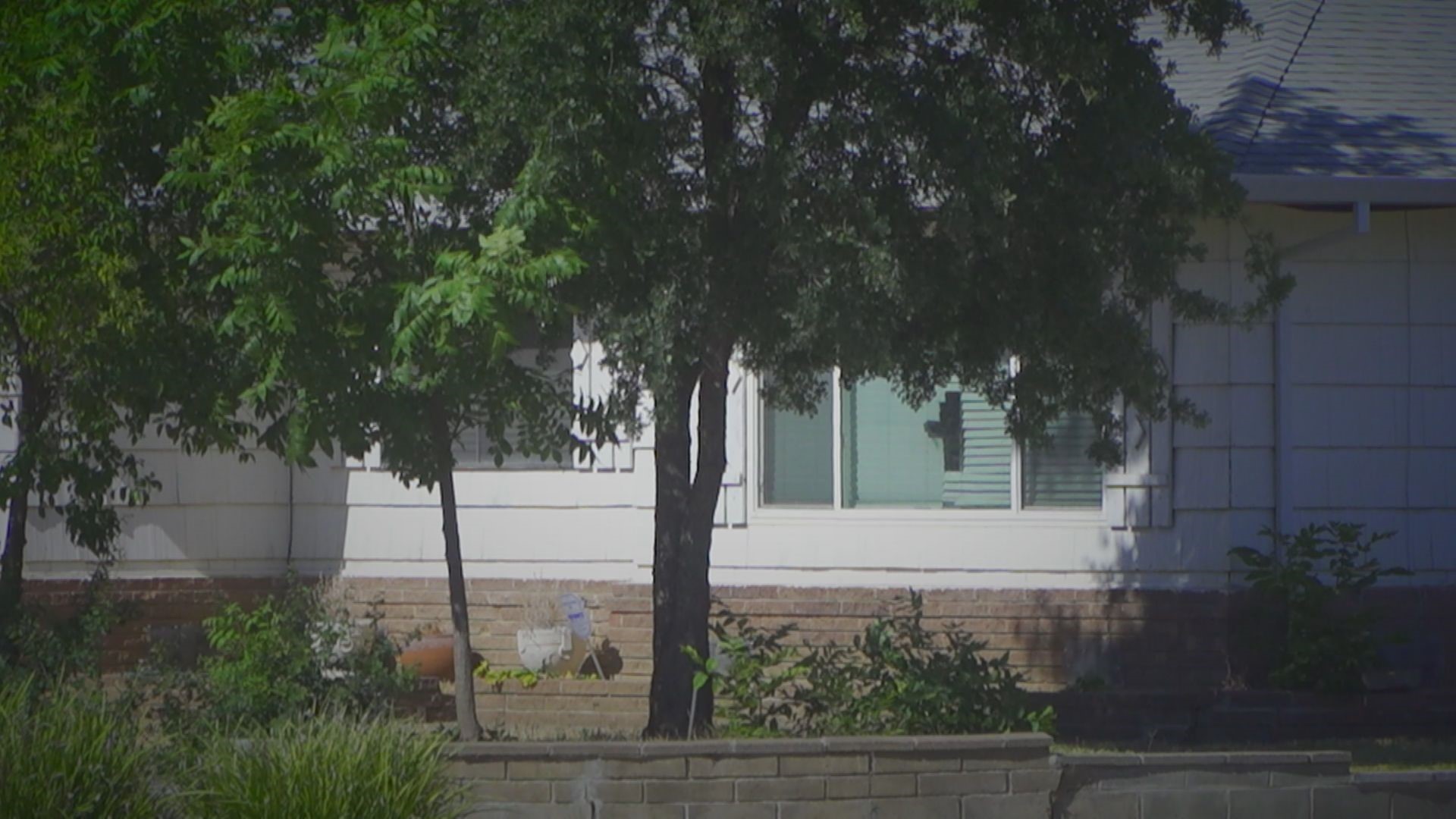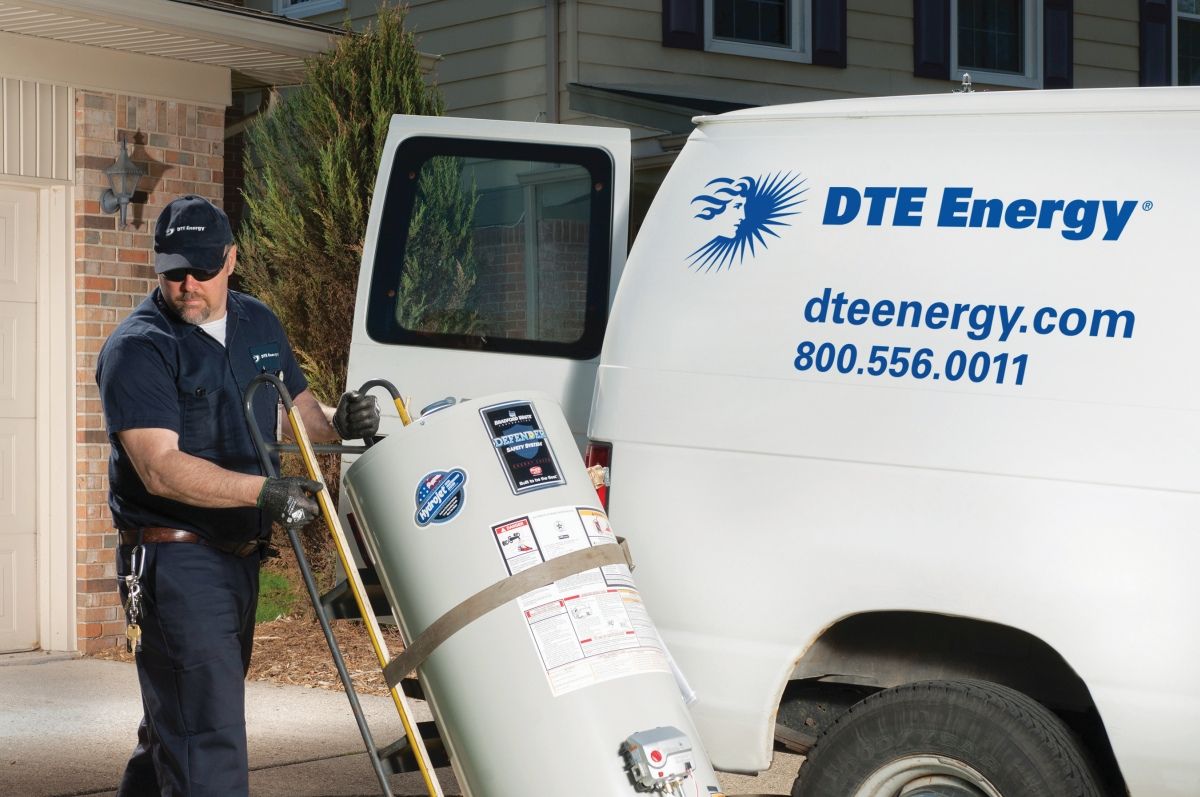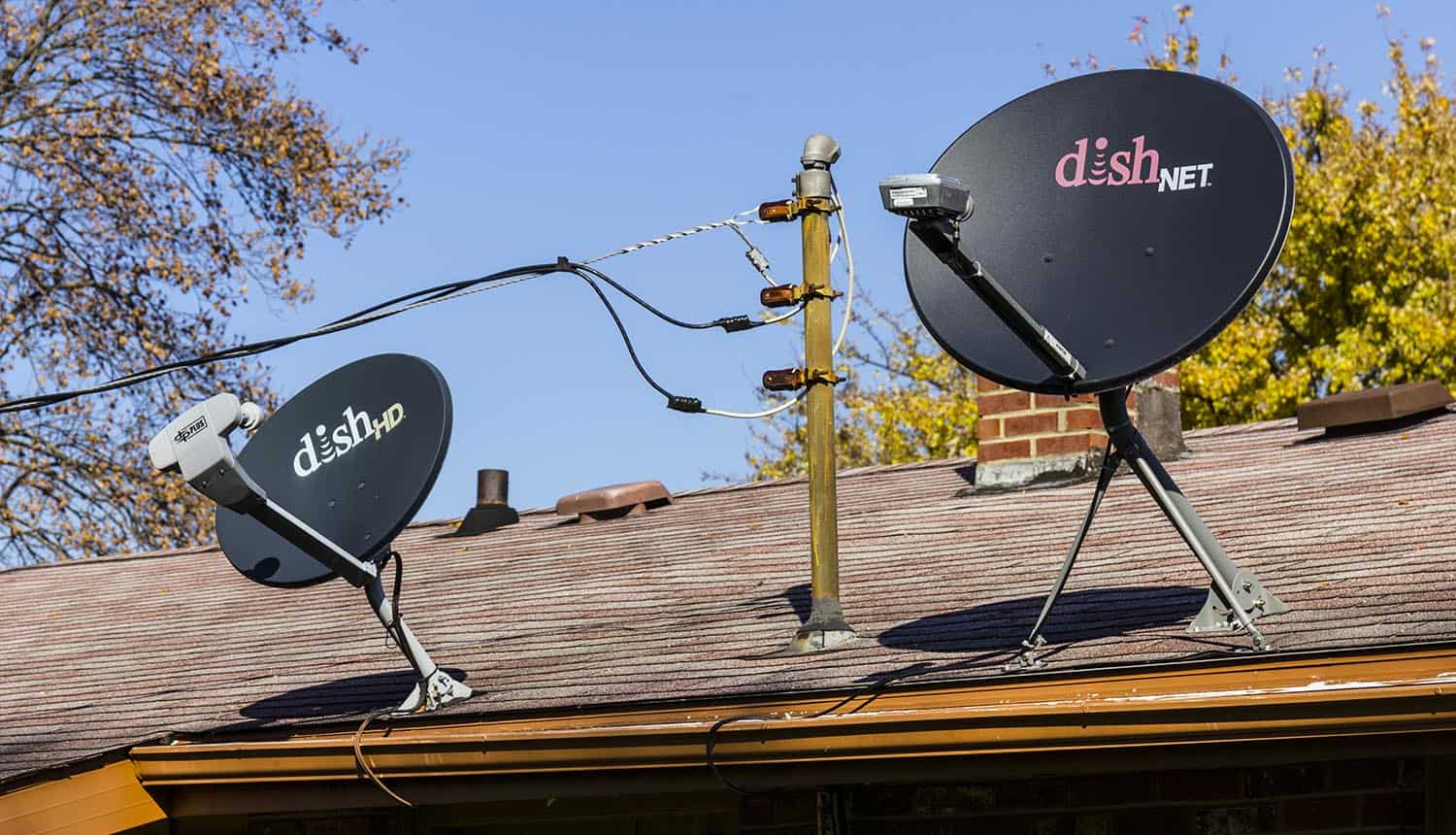Home>Home Security and Surveillance>What Is Home Protection Scheme


Home Security and Surveillance
What Is Home Protection Scheme
Modified: March 6, 2024
Learn about the importance of home security and surveillance with our comprehensive Home Protection Scheme. Protect your home and loved ones today!
(Many of the links in this article redirect to a specific reviewed product. Your purchase of these products through affiliate links helps to generate commission for Storables.com, at no extra cost. Learn more)
Introduction
Welcome to our comprehensive guide on the Home Protection Scheme, designed to provide homeowners with peace of mind and a sense of security for their properties. In today’s world, where threats to our homes can arise from various sources, it is crucial to have a robust security system in place. The Home Protection Scheme combines advanced technology and expert surveillance to safeguard our most valuable possession – our homes.
With the rise in home burglaries, vandalism, and property damage, it has become increasingly important to invest in effective security measures. Homeowners are realizing the significance of having a comprehensive home security and surveillance system that not only deters criminals but also provides round-the-clock monitoring and protection.
The Home Protection Scheme is specifically designed to address these needs. It offers a wide range of features and benefits, providing homeowners with the peace of mind they deserve. In this guide, we will explore the various aspects of the Home Protection Scheme, from its definition and purpose to its eligibility criteria and coverage.
Furthermore, we will delve into the application and enrollment process, discuss the premiums and payments associated with this scheme, as well as provide insights into the claim process and relevant exclusions and limitations. We will also compare the Home Protection Scheme with other insurance plans to highlight its unique advantages and benefits.
By the end of this guide, you will have a thorough understanding of the Home Protection Scheme and its importance in securing your home and safeguarding your loved ones. So, without further ado, let’s dive in and explore the world of home security and surveillance.
Key Takeaways:
- Home Protection Scheme provides advanced security technology and round-the-clock monitoring to keep homes safe from break-ins and emergencies, offering peace of mind and potential insurance premium discounts.
- Eligible homeowners can enroll in the scheme for enhanced security, but should be aware of exclusions and compare with other insurance plans to make an informed decision for their home protection.
Read more: What Is Total Home Protection
Definition of Home Protection Scheme
The Home Protection Scheme is a comprehensive security program designed to protect and safeguard residential properties from various threats and risks. It combines advanced technology, such as surveillance cameras, motion sensors, and alarms, with professional monitoring services to provide reliable and round-the-clock security.
This scheme aims to create a secure environment for homeowners, giving them confidence and peace of mind that their homes are protected against potential break-ins, theft, and other criminal activities. It goes beyond traditional security systems by offering proactive surveillance, real-time alerts, and quick response mechanisms.
The Home Protection Scheme is not limited to just physical security measures. It also encompasses elements of cybersecurity, including securing Wi-Fi networks, protecting smart home devices, and offering antivirus and firewall solutions.
What sets the Home Protection Scheme apart is its integration of multiple technologies and services into a single, cohesive system. These include surveillance cameras with high-definition video capturing capabilities, motion sensors that detect any unauthorized movement, smart home automation features for remote control and monitoring, and a dedicated team of security professionals who actively monitor the property.
Furthermore, the Home Protection Scheme provides homeowners with access to a mobile app or web portal that allows them to monitor their property in real-time, receive alerts, and even control various security features remotely.
In essence, the Home Protection Scheme offers a comprehensive and all-encompassing approach to home security and surveillance. By combining cutting-edge technology, expert monitoring, and proactive measures, it ensures that homeowners can enjoy a safe and secure living environment for themselves and their families.
Purpose of Home Protection Scheme
The primary purpose of the Home Protection Scheme is to provide homeowners with a high level of security, peace of mind, and protection against various threats and risks. Let’s take a closer look at the key objectives and benefits this scheme offers:
- Preventing Break-ins and Theft: One of the main purposes of the Home Protection Scheme is to deter criminals and prevent break-ins and theft. The presence of visible surveillance cameras, alarms, and motion sensors acts as a strong deterrent, discouraging potential burglars and intruders from targeting the property.
- 24/7 Monitoring and Response: The Home Protection Scheme provides round-the-clock monitoring of the property. Trained security professionals continuously monitor the surveillance feeds and alarm systems. In case of any suspicious activity or breach, they can quickly respond by contacting the homeowner or dispatching emergency services, ensuring a swift and effective action is taken.
- Prompt Response to Emergencies: In the event of emergencies such as fire, carbon monoxide leaks, or medical incidents, the Home Protection Scheme can provide immediate alerts and coordinate with emergency services. This ensures that homeowners receive the necessary help in a timely manner, potentially saving lives and minimizing property damage.
- Remote Access and Control: The Home Protection Scheme allows homeowners to remotely access and control their security system through a mobile app or web portal. This enables them to monitor live video feeds, receive real-time alerts, arm or disarm the system, and control smart home devices from anywhere in the world. It provides convenience, flexibility, and peace of mind, especially when traveling or away from home.
- Peace of Mind and Sense of Security: By investing in the Home Protection Scheme, homeowners can enjoy a heightened sense of security and peace of mind. Knowing that their property is being monitored and protected 24/7 reduces stress and anxiety, allowing them to focus on their daily lives without constant worry about the safety of their home.
- Reducing Insurance Premiums: Some insurance companies offer discounts on homeowners’ insurance premiums for properties equipped with a comprehensive home security system. By installing the Home Protection Scheme, homeowners may qualify for such discounts, resulting in cost savings over time.
In summary, the purpose of the Home Protection Scheme is to create a secure and safe living environment, deter criminals, provide proactive monitoring, and ensure prompt response to emergencies. It offers convenience, peace of mind, and potential cost savings, making it an essential investment for homeowners looking to protect their properties and loved ones.
Eligibility for Home Protection Scheme
The Home Protection Scheme aims to provide security and peace of mind to homeowners across various locations. While eligibility criteria may vary slightly depending on the specific provider, here are the common factors that determine eligibility for the scheme:
- Residential Property Ownership: To be eligible for the Home Protection Scheme, homeowners must be the legal owner or co-owner of the residential property. This can include houses, apartments, condominiums, or townhouses.
- Property Type and Size: The Home Protection Scheme typically covers both single-family homes and multi-unit residential dwellings. However, certain schemes may have limitations on the size or number of housing units covered. It’s important to check with the provider to confirm eligibility based on property type and size.
- Geographical Coverage: The Home Protection Scheme may have specific geographical coverage limitations. Providers may operate in specific regions or locations, ensuring that their security services and monitoring are available in those areas. Homeowners should verify if their property falls within the coverage area before enrolling in the scheme.
- System Compatibility: The Home Protection Scheme may require specific security systems, equipment, or technologies to be installed in the property. Homeowners should check if their existing security system meets the compatibility requirements of the scheme or if additional installations or upgrades are necessary.
- Financial Obligations: Eligibility for the Home Protection Scheme is often contingent upon meeting financial obligations. This includes payment of premiums and any associated fees or charges. Homeowners should ensure they can meet these financial commitments before enrolling in the scheme.
- Legal Requirements: In some cases, certain legal requirements or restrictions may impact eligibility for the Home Protection Scheme. Homeowners should verify if there are any legal obligations or regulations specific to their region or property type that may affect their eligibility.
It’s important to note that eligibility criteria might vary among different providers or insurance companies offering the Home Protection Scheme. Homeowners should thoroughly review the terms and conditions, policies, and eligibility requirements of the specific scheme they are considering to ensure they meet all the necessary criteria.
By meeting these eligibility requirements, homeowners can benefit from the comprehensive security and monitoring services provided by the Home Protection Scheme, creating a safer and more secure living environment for themselves and their loved ones.
Benefits of Home Protection Scheme
The Home Protection Scheme offers a range of benefits to homeowners, providing them with peace of mind and ensuring the safety and security of their properties. Here are some key advantages of enrolling in the Home Protection Scheme:
- Enhanced Security: The primary benefit of the Home Protection Scheme is enhanced security for your home. With a comprehensive system in place, including surveillance cameras, motion sensors, and alarms, potential intruders are deterred, minimizing the risk of break-ins and theft. The visible presence of security equipment acts as a strong deterrent and protects your property.
- Round-the-Clock Monitoring: The Home Protection Scheme provides 24/7 monitoring of your property. Trained security professionals constantly monitor the surveillance cameras and alarm systems, ensuring that any suspicious activity is promptly detected and addressed. This continuous monitoring adds an extra layer of security and ensures a quick response to potential threats.
- Proactive Alert System: The Home Protection Scheme is equipped with an advanced alert system that notifies homeowners of any potential security breaches or emergencies. You can receive instant alerts through your preferred channel, such as SMS, email, or mobile app notifications. This proactive system allows you to take immediate action and alert the authorities if necessary.
- Remote Access and Control: With the Home Protection Scheme, you can access and control your security system remotely. Using a mobile app or web portal, you can view live video feeds, arm or disarm the system, receive alerts, and manage smart home devices from anywhere in the world. This flexibility and convenience provide peace of mind, especially when you are away from home.
- Integration with Smart Home Devices: The Home Protection Scheme can seamlessly integrate with smart home devices such as smart locks, thermostats, and lighting systems. This integration allows you to automate various aspects of your home security and create personalized routines. For example, you can set your lights to turn on automatically when the system detects movement at night, giving the illusion of occupancy and deterring potential intruders.
- Insurance Premium Discounts: Many insurance providers offer discounts on homeowners’ insurance premiums for properties equipped with a comprehensive security system like the Home Protection Scheme. By enrolling in the scheme, you may be eligible for a reduced insurance premium, resulting in potential cost savings over time.
- Peace of Mind: Perhaps the most significant benefit of the Home Protection Scheme is the peace of mind it brings. Knowing that your property is being monitored, protected, and that you have the ability to monitor and control your security system at any time, allows you to feel secure and at ease, even when you are not physically present at home.
The Home Protection Scheme offers a comprehensive and integrated approach to home security, ensuring the safety and well-being of homeowners and their loved ones. By taking advantage of these benefits, homeowners can enjoy a secure living environment, peace of mind, and potential cost savings through reduced insurance premiums.
Read more: What Is A Home Protection Plan
Coverage under Home Protection Scheme
The Home Protection Scheme offers comprehensive coverage to protect your home from various risks and threats. While the specific coverage may vary depending on the provider and plan you choose, here are the common areas typically covered under the scheme:
- Physical Security: The Home Protection Scheme covers the installation and maintenance of physical security features such as surveillance cameras, motion sensors, door and window sensors, alarms, and smart locks. These components work together to create a layered security system, deterring potential intruders and providing early detection of any unauthorized activity.
- 24/7 Monitoring: The scheme includes round-the-clock monitoring of your property. Trained security professionals continuously monitor the surveillance feeds and alarm systems to detect any suspicious activity or security breaches. This proactive monitoring ensures a quick and effective response to potential threats.
- Real-Time Alerts: The Home Protection Scheme provides real-time alerts to homeowners in the event of a security breach or emergency. These alerts are sent through various channels such as SMS, email, or mobile app notifications, allowing you to take immediate action or alert the authorities if necessary.
- Remote Access and Control: With the Home Protection Scheme, you can access and control your security system remotely. Through a mobile app or web portal, you can view live video feeds, arm or disarm the system, receive alerts, and manage smart home devices from anywhere at any time. This remote access and control add convenience and flexibility to your home security management.
- Emergency Response Coordination: In the event of an emergency such as fire, carbon monoxide leaks, or medical incidents, the Home Protection Scheme can facilitate prompt response coordination. This includes contacting emergency services or notifying designated contacts on your behalf to ensure swift and appropriate action is taken.
- Cybersecurity Protection: The scheme may provide cybersecurity protection for your home network and connected smart devices. This can include antivirus and firewall solutions, regular security updates, and guidance on best practices for securing your smart home ecosystem.
- Insurance Coverage: Some Home Protection Schemes may offer additional insurance coverage for property damage or loss resulting from covered incidents. It’s important to review the specific terms and conditions of your scheme to understand the extent of insurance coverage provided.
While the Home Protection Scheme provides comprehensive coverage, it’s crucial to review the details of the coverage offered by your chosen provider. Take the time to understand the specific features, limits, and exclusions of the scheme to ensure it aligns with your security needs and expectations.
By having a thorough understanding of the coverage under the Home Protection Scheme, you can make informed decisions regarding your home security and select the plan that best suits your requirements.
When considering the Home Protection Scheme, make sure to understand the coverage it provides for your HDB flat loan in the event of death, terminal illness, or permanent disability. It’s important to weigh the benefits and costs before making a decision.
Application and Enrollment Process
The application and enrollment process for the Home Protection Scheme is designed to be simple and straightforward. Although specific steps may vary depending on the provider, here is a general overview of the process:
- Research and Comparison: Start by researching different Home Protection Scheme providers to find the one that best meets your needs. Compare their offerings, coverage, pricing, and customer reviews to make an informed decision.
- Contact the Provider: Once you have identified a provider, reach out to them either through their website, email, or phone to express your interest in the Home Protection Scheme. They will guide you through the application process and provide you with the necessary information.
- Schedule an Assessment: In some cases, providers may schedule an assessment of your property to determine the specific security needs and recommend suitable equipment and services. This assessment may be conducted virtually or in-person, depending on the provider’s policies.
- Customization and Plan Selection: Based on the assessment and your requirements, the provider will present you with various plans and customization options. They will help you choose the plan that provides the desired level of security and fits your budget.
- Installation: Once you have selected a plan, the provider will schedule the installation of the necessary security equipment and components. They will assign trained technicians who will handle the installation process, ensuring all devices are properly set up and integrated into your home security system.
- Enrollment and Contracts: At this stage, you will be required to sign an enrollment form and any associated contract or agreement. Read through the terms and conditions carefully, ensuring you understand the coverage, payment terms, cancellation policies, and any other relevant details.
- Payment Setup: Set up the payment method for your Home Protection Scheme. This may involve providing payment details such as credit card information or setting up automatic bank transfers. Verify the payment schedule, whether it’s monthly, quarterly, or annually, and ensure that you are comfortable with the payment arrangement.
- Orientation and Training: After the installation and enrollment process, the provider will provide an orientation session to familiarize you with your new home security system. They will walk you through how to use the system, access the remote features, and understand the various functionalities.
- Ongoing Support: Once you are enrolled in the Home Protection Scheme, the provider will offer ongoing support for any technical issues or questions you may have. This support may be available through phone, email, or online chat.
It’s important to remember that the specific steps and requirements may vary among different providers. Always refer to the instructions and guidance provided by your chosen Home Protection Scheme provider to ensure a smooth and hassle-free application and enrollment process.
By diligently following the application and enrollment process, you can protect your home with the help of a comprehensive security system and enjoy the added peace of mind that comes with it.
Premiums and Payments
When enrolling in a Home Protection Scheme, homeowners are required to pay premiums to maintain the coverage and access the security services provided. Here are some key aspects to understand regarding premiums and payments:
- Premium Calculation: The premiums for the Home Protection Scheme are typically calculated based on several factors, including the size and value of the property, location, security system features, and the desired level of coverage. The provider will evaluate these factors to determine the appropriate premium amount.
- Payment Schedule: Premiums are generally paid on a regular basis, such as monthly, quarterly, or annually. The payment schedule will be disclosed in the contract or agreement that you sign during enrollment. Ensure that you are comfortable with the payment frequency and timing before committing to the scheme.
- Payment Methods: Home Protection Scheme providers usually offer multiple payment methods for your convenience. These can include credit or debit card payments, bank transfers, or setting up automatic deductions from your bank account. Choose the payment method that works best for you and aligns with your financial management preferences.
- Discounts and Promotions: Some providers may offer discounts or promotional offers for new customers or as part of special promotions. These discounts can help reduce the overall premium amount. It is advisable to inquire about any available discounts and take advantage of them if applicable.
- Late Payments and Cancellation: It is essential to understand the provider’s policies regarding late payments and cancellation. Late payments may incur additional charges or penalties, potentially affecting the coverage or service. If you wish to cancel the scheme, be aware of any cancellation fees or notice periods that may apply.
- Insurance Premium Discounts: As mentioned earlier, some insurance companies offer discounts on homeowners’ insurance premiums for properties equipped with a comprehensive security system like the Home Protection Scheme. By having this scheme in place, you may be eligible for reduced insurance premiums. Consult with your insurance provider to explore the potential savings.
- Regular Premium Reviews: Home Protection Scheme premiums are subject to periodic reviews. Providers may reassess the premiums based on factors such as inflation, technology upgrades, or changes in the security risks landscape. Stay informed about these reviews to understand potential premium adjustments.
- Changes to Premiums: Providers may make changes to premiums over time due to various factors. These changes can include adjustments in the coverage amount, inclusion of new features or technologies, or changes in the overall pricing structure. Ensure you are aware of any changes to your premium and understand the reasons behind them.
It’s important to carefully review all details related to premiums and payments before enrolling in the Home Protection Scheme. Thoroughly read and understand the terms and conditions, payment requirements, and any associated costs or fees to make an informed decision.
By responsibly managing the premiums and payments, you can ensure the continuity of your home security coverage and enjoy the benefits that the Home Protection Scheme offers.
Claim Process
In the event of a security incident or covered event, understanding the claim process is crucial to ensure a smooth and efficient resolution. While the specific claim process may vary between providers, here is a general overview of how the Home Protection Scheme claim process typically works:
- Report the Incident: As soon as you become aware of a security incident or covered event, such as a break-in or property damage, report the incident to your Home Protection Scheme provider. Contact their claims department through the designated phone number or email address provided in your policy documents.
- Provide Required Documentation: The claims department will guide you through the necessary documentation required to process your claim. This may include incident reports, police reports, photographs or videos of the damage, and any other supporting evidence. Provide all requested documentation in a timely manner to ensure an expedited claims process.
- Assessment and Investigation: Once the necessary documentation is submitted, the claims department will assess and investigate the claim. This may involve verifying the incident details, evaluating the damages or losses, and determining the coverage and benefits applicable to your Home Protection Scheme.
- Resolution and Settlement: Based on their assessment, the claims department will work towards a resolution and make a settlement offer. This offer may include repairs or replacements of damaged property, reimbursement for stolen items, or any other applicable benefits as specified in your policy. If you agree to the settlement offer, the claim will be finalized.
- Payments and Deductibles: Depending on your Home Protection Scheme policy, you may be responsible for deductibles, which are the out-of-pocket expenses you must pay before the insurance coverage kicks in. Ensure you understand the deductible amount specified in your policy and how it will be applied to your claim settlement.
- Claim Denial or Dispute Process: In some cases, a claim may be denied or disputed by the provider. If you believe the decision is unjust or have concerns about the resolution, review the provider’s claim denial or dispute process outlined in your policy. Follow the instructions to initiate a review or appeal of the claim decision.
- Feedback and Customer Support: Throughout the claim process, maintain open communication with the claims department and seek clarification or support as needed. Address any concerns or issues promptly to ensure a satisfactory resolution.
Remember that it is crucial to carefully review your Home Protection Scheme policy documents to familiarize yourself with the specific claim process, terms, and conditions outlined by the provider. Understanding the claim process and your rights as a policyholder will help you navigate the process smoothly and ensure a fair and efficient resolution of your claims.
By following the required steps and providing the necessary documentation, you can expect a streamlined claim process and receive the benefits and coverage offered by your Home Protection Scheme in a timely manner.
Read more: What Is The Best Handgun For Home Protection
Exclusions and Limitations
While the Home Protection Scheme provides comprehensive coverage for your home security and surveillance, it is important to be aware of the exclusions and limitations that may apply. These exclusions and limitations define the circumstances or events that may not be covered under the scheme. Here are some common exclusions and limitations to consider:
- Pre-Existing Conditions: Home Protection Schemes typically do not cover pre-existing conditions, meaning any damages, security incidents, or events that occurred before the start date of the policy. It is essential to carefully review the terms and conditions to understand the cut-off dates and any specific exclusions related to pre-existing conditions.
- Improper Maintenance: Neglecting proper maintenance of your home security system and failing to address any issues or repairs in a timely manner could result in limited coverage or denial of claims. It is important to follow the recommended maintenance guidelines provided by the provider to ensure that your system operates effectively and remains eligible for coverage.
- Unapproved Modifications: Making unauthorized modifications or changes to your home security system may lead to limitations or exclusions in coverage. Any alterations or additions to the system should be approved by the provider to ensure their compatibility and compliance with the scheme requirements.
- Acts of War or Terrorism: Home Protection Schemes typically exclude coverage for damages resulting from acts of war, terrorism, civil unrest, or similar events. These types of incidents are often addressed by separate insurance policies or government schemes designed specifically for such situations.
- Concurrent Insurance: If you have concurrent insurance in place that covers similar security and surveillance areas, you may need to disclose this information to the provider. Failure to disclose concurrent insurance may affect the coverage and claims process under the Home Protection Scheme.
- Intentional Acts or Illegal Activities: Any damages, losses, or incidents resulting from intentional acts, illegal activities, or fraudulent actions are generally excluded from coverage. Engaging in illegal activities or misusing the security system can lead to the denial of claims.
- Force Majeure Events: Home Protection Schemes may have limitations or exclusions for damages caused by force majeure events, such as natural disasters or extreme weather conditions. These events are typically covered by separate insurance policies.
- Geographic Restrictions: Some Home Protection Schemes may have geographic restrictions, meaning that coverage may not apply to certain geographical areas or regions. It is crucial to understand these limitations before enrolling in the scheme, especially if you have a specific location requirement.
It is important to carefully review the terms and conditions of your Home Protection Scheme policy to fully understand the exclusions and limitations specific to your coverage. If you have any doubts or questions, reach out to the provider’s customer service for clarification.
By being aware of the exclusions and limitations, you can set realistic expectations for the coverage provided by your Home Protection Scheme and avoid any surprises or misunderstandings when it comes to filing claims.
Comparison with Other Insurance Plans
When considering the Home Protection Scheme, it’s important to compare it with other insurance plans that offer coverage for your home and its contents. While each insurance plan has its own unique features, here are some points of comparison to consider:
- Scope of Coverage: Home Protection Schemes focus specifically on home security and surveillance, offering comprehensive coverage for theft, break-ins, property damage, and related incidents. Other insurance plans, such as homeowners’ insurance or renter’s insurance, provide broader coverage, including protection against natural disasters, liability coverage, and coverage for personal belongings.
- Premiums and Costs: Compare the premiums and costs associated with the Home Protection Scheme against other insurance plans. Consider the coverage provided, deductibles, and any additional fees or charges. Evaluate the overall value for money based on your specific security needs and budget.
- Claims Process: Review the claims process and customer support offered by the Home Protection Scheme and compare it with other insurance plans. Evaluate factors such as ease of filing a claim, the responsiveness of the claims department, and the speed of claims resolution.
- Additional Services and Benefits: Consider any additional services or benefits offered by the Home Protection Scheme that differentiate it from other insurance plans. This can include features such as remote access and control, professional monitoring, real-time alerts, and integration with smart home devices. Assess whether these additional services align with your security needs.
- Specialized Expertise: Home Protection Schemes typically have specialized expertise and focus specifically on home security. This specialization allows them to offer tailored solutions, advanced technology, and dedicated support for homeowners seeking comprehensive protection. Other insurance plans may not have the same level of specialization in this area.
- Policy Limits and Exclusions: Compare the policy limits and exclusions of the Home Protection Scheme with other insurance plans. Assess whether the coverage provided by the scheme meets your requirements and if any specific exclusions or limitations may impact your overall security needs.
- Insurance Bundling Opportunities: Explore the potential for bundling the Home Protection Scheme with other insurance policies, such as homeowners’ insurance or auto insurance. Bundling policies with the same provider may provide additional benefits, such as cost savings or streamlined claims processes.
- Reputation and Customer Satisfaction: Research and compare the reputation and customer satisfaction ratings of the Home Protection Scheme provider and other insurance companies. Read reviews, check ratings on independent review platforms, and consider feedback from existing customers to gauge the level of customer satisfaction and reliability offered by different providers.
By conducting a thorough comparison of the Home Protection Scheme with other insurance plans, you can assess the alignment of coverage, costs, and benefits with your specific security and insurance needs. Consider your priorities, budget, and preferences to make an informed decision about the most suitable plan for your home security.
Keep in mind that it is important to review the terms, conditions, and policy documents of each insurance plan to fully understand the coverage, exclusions, limitations, and any associated costs.
Conclusion
In this comprehensive guide, we have explored the Home Protection Scheme and its significance in ensuring the security and surveillance of our homes. This scheme offers a holistic approach to home security, combining advanced technology, professional monitoring, and proactive measures.
The Home Protection Scheme provides homeowners with peace of mind by deterring potential intruders, offering 24/7 monitoring of their property, and providing real-time alerts in case of security breaches or emergencies. The ability to remotely access and control the security system adds convenience and flexibility to managing home security.
Enrolling in the Home Protection Scheme involves a straightforward application and enrollment process. Homeowners should consider factors such as eligibility requirements, coverage details, premiums, and payment arrangements before selecting a provider.
While the Home Protection Scheme offers comprehensive coverage, it is important to be aware of the exclusions and limitations that may apply. Understanding these aspects will help homeowners set realistic expectations and be prepared when filing claims.
When comparing the Home Protection Scheme with other insurance plans, it is crucial to assess factors such as coverage scope, premiums, claim processes, additional services, policy limits, and customer satisfaction. By conducting a thorough comparison, homeowners can select the plan that provides the best fit for their security needs and offers the most value.
In conclusion, the Home Protection Scheme plays a critical role in safeguarding our homes and ensuring the well-being of our loved ones. By investing in this comprehensive security system, homeowners can enjoy enhanced security, peace of mind, and potential cost savings through insurance premium discounts.
Remember to carefully review the terms and conditions of your chosen Home Protection Scheme, ask questions, and seek clarification as needed. By making an informed decision and taking proactive steps to protect our homes, we can create a secure living environment where our families can thrive.
Frequently Asked Questions about What Is Home Protection Scheme
Was this page helpful?
At Storables.com, we guarantee accurate and reliable information. Our content, validated by Expert Board Contributors, is crafted following stringent Editorial Policies. We're committed to providing you with well-researched, expert-backed insights for all your informational needs.













